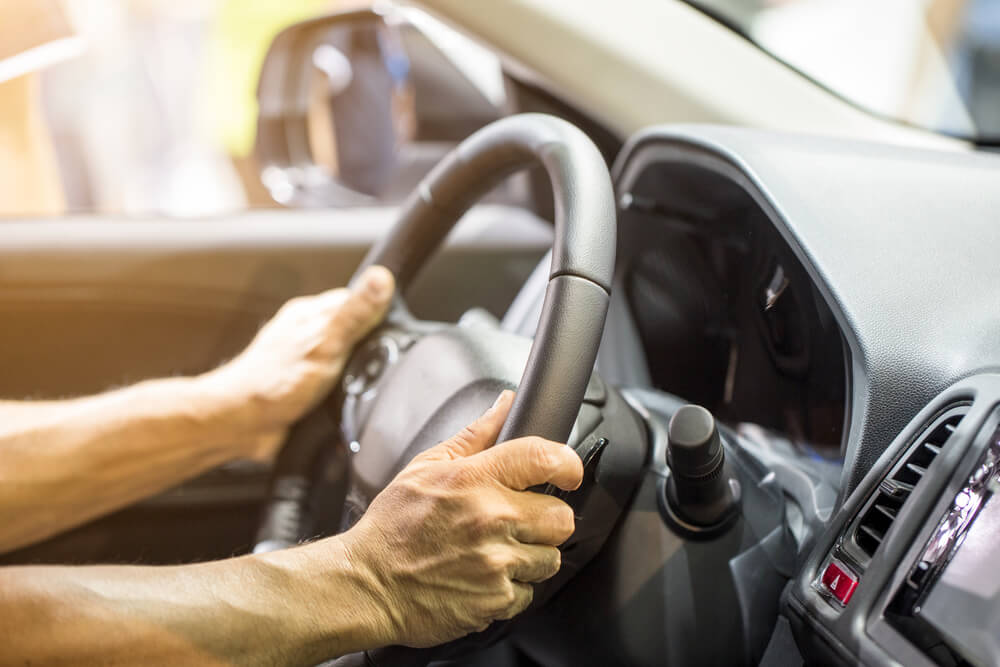Driving and Stroke: Rehabilitation Helps Stroke Victims Regain Independence

Every year, more than 795,000 people in the United States suffer a stroke, according to the U.S. Centers for Disease Control and Prevention. With improvements to modern science, more and more stroke victims are recovering and regaining independence.
A 2012 article published by the National Stroke Association and the Journal of Stroke and Cerbrovasular Disease stated, “In approximately 30% of stroke survivors, it is clear from the onset that driving will no longer be possible. Approximately 33% of survivors will be able to return to driving with little or no retraining, and 35% will require driving-related rehabilitation before they can resume safe driving again.”
Leading Neurological Disorder That Results in Driving Inability
Stroke is the leading neurological disorder that causes the inability to maintain driving independence. In addition to stroke survival, modern medicine may also lend to more survivors having the opportunity to regain driving independence with rehabilitation. The aforementioned study goes on to describe the level at which stroke survivors are underserved in this area. “Approximately one-third of survivors return to driving within 1 year of onset of stroke; of these, 87% receive no formal post-stroke driving evaluation and 52% receive no post-stroke driving advice or counseling at all.”
Chief among long-term effects that can drastically impair driving ability include impaired vision or speech, severe weakness, and paralysis of limbs on one side of the body. Although driving is an important activity of daily living for many, long-standing stoke treatment and rehabilitation has missed the importance of driving fitness in long-term recovery and assessment. Practitioners may be hesitant to take this on as part of an overall treatment plan in part because there is difficulty in determining where the line between “able and unable” to safely operate a vehicle lies.
Virtual Driving Simulators Help Regain Independence
When would it be safe for both the survivor and the community to put a patient behind the wheel in a real-world environment? Patients with an eagerness to regain independence may jump in too quickly or cautious practitioners may hold patients back from regaining independence. A virtual driving simulator can help make this determination safely and objectively.
Recent studies have found that performance in a driving simulator can better predict actual driving skills when compared to performance following an on-road test due in part to the ability of a virtual simulator to expose the driver to a wider range of real-world demands. This allows practitioners to measure both lower-level and higher-level skills.
Sensory, cognitive and motor functions can be easily evaluated with virtual simulators. Such visual simulation tools can help therapists exercise and evaluate a patient’s functional abilities and key performance skills making driving rehabilitation a common and necessary part of overall stroke rehabilitation. This evaluation can be done in a safe environment for measuring a driver’s fitness. A simulator tests the ability of a patient to take cognitive inputs and respond with physical movements necessary to operate a vehicle and maneuver in unpredictable circumstances. Performance can be measured and key performance issues can be corrected and practiced in a safe, simulated environment.
Car driving simulators apply driving context to the rehabilitation process making the experience more realistic and useful for patients. Studies have shown some evidence that visuocognitive training with driving simulators can improve driver performance through increased situational awareness, visual attention, hazard avoidance, and kinetic depth perception, perhaps leading to greater success in behind-the-wheel performance.
So, what can virtual driving simulation do for the survivor? Imagine as a stroke survivor facing an overwhelming medical recovery and at the same time facing the very real possibility that independent driving may no longer be viable. Imagine the loss of self-worth having to rely on others to make necessary medical appointments, hold employment, maintain a social life or simply manage day-to-day living. Imagine as a patient having a medical practitioner understand how important the ability to drive would be for long-term recovery both practically and as a matter of dignity. And imagine having a medical practitioner that has a resource available to help.
Driving rehabilitation can enhance the quality and scope of patient care. For patients who were independent drivers before having a stroke, driving rehabilitation should be part of a discharge plan that takes into account the entirety of important activities for daily living. Being behind the wheel for the first time may be intimidating for a stroke survivor who is still working on regaining mental and physical ability. Am I ready? Can I focus long enough to safely arrive at my destination? Can I react in time to road conditions? What if I’m not ready? DriveSafety affords stroke survivors the opportunity to safely, independently, and confidently get behind the wheel and regain valuable independence.
Practicing and evaluating driving skills alongside a therapist allows for direct and immediate feedback. A patient then has the ability to self-evaluate and be an active participant in regaining driving independence. Regaining this key component of independence can have a positive impact on a patient’s physical, social and emotional well-being.
The previously-mentioned study published by the Journal of Stroke and Cerebrovasular Disease stated, “As evaluation devices, simulators are unique in that they provide realistic and dynamic spatiotemporal challenges involving the coordination of multiple perceptual-motor skills for goal-directed problem solving.” The publication concludes by stating, “The future of cognitive rehabilitation in the treatment of patients with stroke appears to be moving in a promising direction, and driving simulators have the potential to play a significant role in the process.”
DriveSafety Simulators Used in Rehabilitation
DriveSafety’s virtual simulators have been tested and proven and offer the opportunity to move from research to clinical application in stroke victim rehabilitation. DriveSafety has the foundational training to conduct screenings for driving rehabilitation with stroke victims alongside occupational therapists and other practitioners in an environment that is safe and comfortable.
Contact us today for an evaluation to determine if one of our clinical simulators is the key to regaining driving independence for your patients.